War Years of the Forties
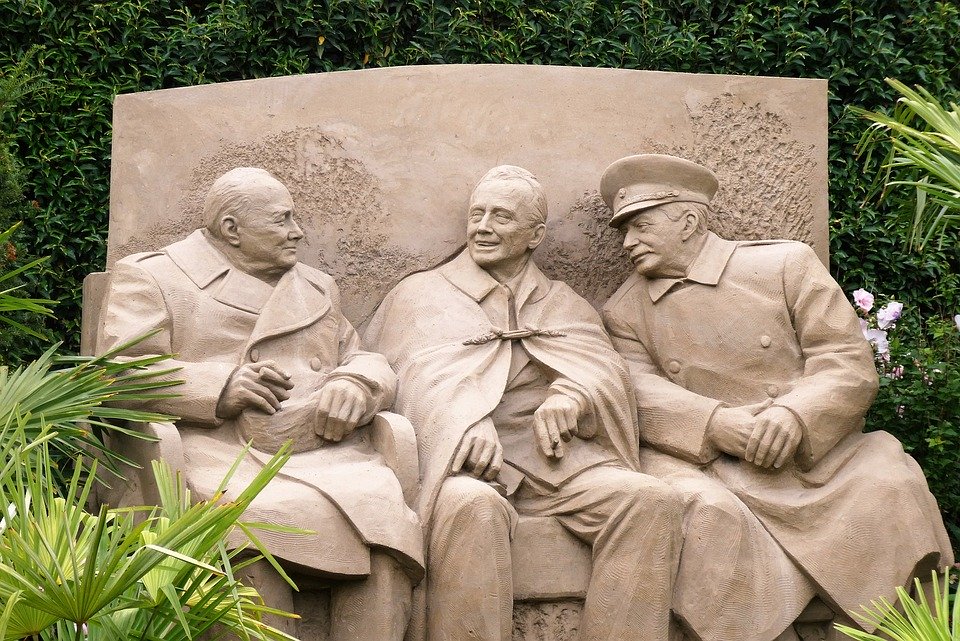
The war years of the forties, commonly called "the war years," was a special time in history.
It was defined by World War II, the Holocaust, the dawn of the nuclear age and the beginning of the Cold War which divided the world into two armed camps.
The war years of the forties ushered in ideological evil that brought death, suffering, displacement and unprecedented changes.
*Antisemitism (hatred of Jews) had been growing since the intellectual and philosophical movement that dominated Europe during the Age of Enlightenment (17th and 18th centuries), between the Glorious Revolution (Catholic King James II of England replaced by his Protestant daughter Mary and her Dutch husband, William of Orange) in 1688 and the French Revolution of 1789 that disbanded a monarchy and led to the rise of Napoleon Bonaparte.
*World War I (1914 -1918) created consequences which led to World War II which include the impact of the Treaty of Versailles, the worldwide economic depression, failure of appeasement, the rise of militarism in Germany and Japan, the failure of the League of Nations and new states in Eastern Europe that were weak for the taking by Hitler.
German and Soviet Union Pact
The war years of the forties brought ideological enemies, fascist, Nazi Germany and communist, Soviet Union (U.S.S.R.) to sign a non-aggression pact (23-24 August 1939) known as the Molotov-Ribbentrop Pact of convenience to divide eastern Europe between them, while pledging not to attack each other for 10 years.
Nazi German Invasion
September 1, 1939
Nazi Germany invaded Poland which started World War II.
It then, invaded Denmark (April 1940), Norway (April 1940), Belgium (May 1940), the Netherlands (May 1940), Luxembourg (May 1940), France (May 1940), Yugoslavia (April 1941) and Greece (April 1941).
Soviet Invasion
September 17, 1939
Soviet Foreign Minister Vyacheslav Molotov declared that "the Polish government has ceased to exist and the U.S.S.R. exercises the Hitler-Stalin Non-aggression pact to invade and occupy eastern Poland."
The Soviets then invaded Finland, Latvia, Estonia, Lithuania and the Romanian region of Bessarabia between 1939 to 1941.
June 22, 1941
Nazi Germany invaded the Soviet Union to eliminate the potential communist threat and the seizure of land within Soviet borders as Lebensraum (“Living space”) for German settlement and Nazi hegemony (dominance).
War Years of the Forties
World War II
In 1939, Germany, Italy and Japan pursued aggressive, militaristic policies which made the war years of the 1940s the most explosive of the 20th century.
World War II started on September 1st, 1939, with Hitler's invasion of Poland and ended with the Japanese surrender on September 2, 1945.
World War II was the most destructive and deadliest war in history involving combatants from many nations.
Only 14 countries remained officially neutral.
Winston Churchill
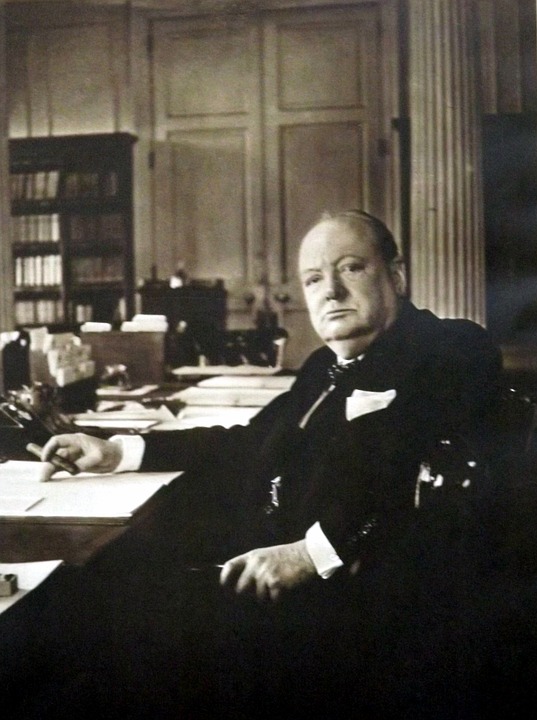
On May 10, 1940, Winston Churchill (1940 - 1945) became Prime Minister of Great Britain replacing Neville Chamberlain who is best known for his role in the Munich Agreement of 1938 which ceded parts of Czechoslovakia to Hitler and his foreign policy of appeasement (weakness to prevent war which only encouraged Hitler).
On the same day, Germany invaded Belgium.
During the 1930s, Churchill called for British re-armament to counter the growing threat of militarism in Nazi Germany.
As Prime Minister, he led Britain from the brink of defeat to victory in World War II.
During the war, he shaped Allied strategy and, in the later stages, he raised the alarm to the communist, expansionist threat of the Soviet Union.
When Japan attacked the United States fleet at Pearl Harbor, Hawaii, on 7 December 1941, President Roosevelt cabled Churchill, "Today all of us are in the same boat...and it is a ship which will not and cannot be sunk."
"That night," Churchill later recalled, "I slept the sleep of the saved and thankful."
Churchill's Most Famous Speech
Winston Churchill was one of the world's greatest orators since Pericles, the Athenian statesman whose Funeral Oration in 431 BC, has become one of the most famous and influential passages in Thucydides' writings that offers a stirring tribute to the culture of Athens, to democracy and freedom, and it celebrates the men who are willing to die for their city.
On June 4, 1940, Churchill had to describe a great military disaster and warn of a possible invasion by Nazi Germany, without casting doubt on ultimate victory.
He also had to prepare the British people for the possible fall of France.
Winston Churchill's message of no surrender, will be remembered as one of the most powerful political oratories of all time was delivered through his exhilarating and forceful personality.
"We shall fight on the beaches we shall fight on the landing grounds we shall fight in the fields and in the streets we shall fight in the hills we shall."
Vichy France
By 26 May, all French and Belgian ports north of the river Somme had been captured - only Dunkirk was still free.
Between 9 May and 22 June 1940, during the Battle of France, German armored units went around the Maginot Line (array of defenses that France built along its border with Germany in the 1930s to prevent an invasion) by pushing through the Ardennes Forest that led directly into the French heartland.
Unaware of the German advance, to the south, Britain and France had sent the bulk of their troops to Belgium.
Paris was captured on June 14, 1940 by the Germans.
On 22 June 1940, the French signed the Armistice agreement imposed by Germany at the very location of the 1918 Armistice signing.
Marshal Petain replaced Paul Reynaud as Prime Minister.
Division of France
The June 22 armistice divided France into two zones:
1. A northern zone under German military occupation comprising the entire Atlantic coast to the western end of the Pyrenees - about two-thirds of the country.
2. A southern zone under nominal French sovereignty controlled by Marshal Petain's right-wing regime based in the town of Vichy.
Marshall Henri-Philippe Petain declared the Etat Francais (French State -July 1940–September 1944).
Vichy France was a puppet regime of the German Nazis.
France remained under German occupation until the Allies defeated the German forces following the Allied landings on D-Day in 1944.
Greece in World War II
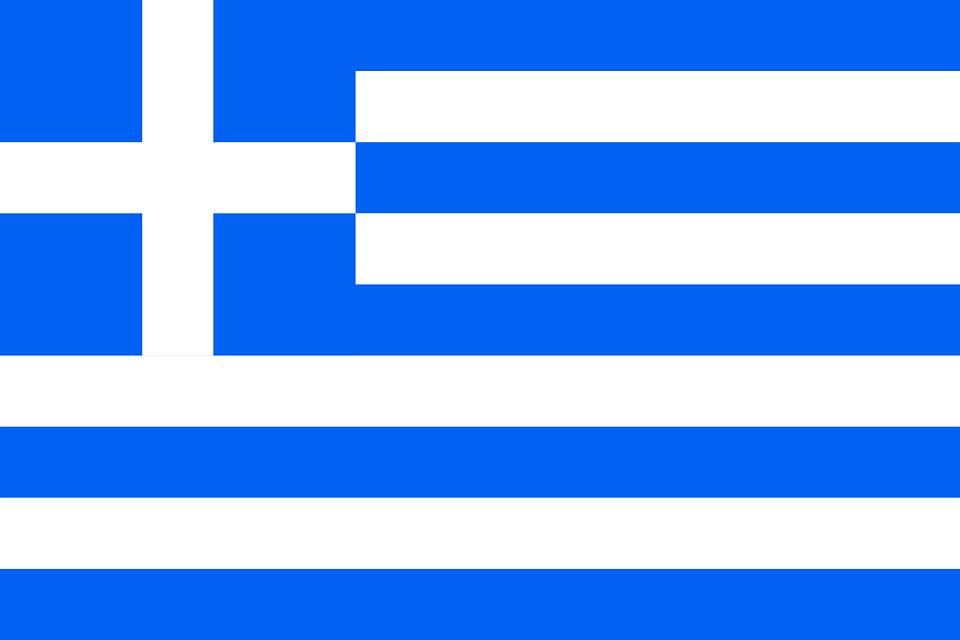
World War II began for Greece on 28 October 1940, when the Italian Army invaded from Albania, beginning the Greco-Italian War.
The Greek Army was able to halt the invasion and was able to push the Italians back into Albania.
The Greek victory over Mussolini's Italian forces was the first victory of the Allies in World War II.
The Greek successes forced Nazi Germany to intervene.
The Greek fight back caused international astonishment, general admiration and praise.
Greece took a total of 216 days to fall against overwhelming odds.
1. Greco-Italian War: 160 days.
2. War against the Germans: 56 days.
Resistance of other countries:
Norway: 61 days.
France: 43 days.
Poland: 30 days.
Belgium: 18 days.
Netherlands: 4 days.
Yugoslavia: 3 days.
Denmark: 0 days.
Czechoslovakia: 0 days.
Luxembourg: 0 days.
American President Franklin Roosevelt
“All free peoples are deeply impressed by the courage and steadfastness of the Greek nation … which is defending itself so valiantly.”
Sir Winston Churchill - British Prime Minister
"Until now we were saying that Greeks fight like heroes. From now on we will say that heroes fight like Greeks!"
Joseph Stalin
“The Russian people will always be grateful to the Greeks for delaying the German army long enough for winter to set in, thereby giving us the precious time, we needed to prepare. We will never forget.”
Battle of Britain
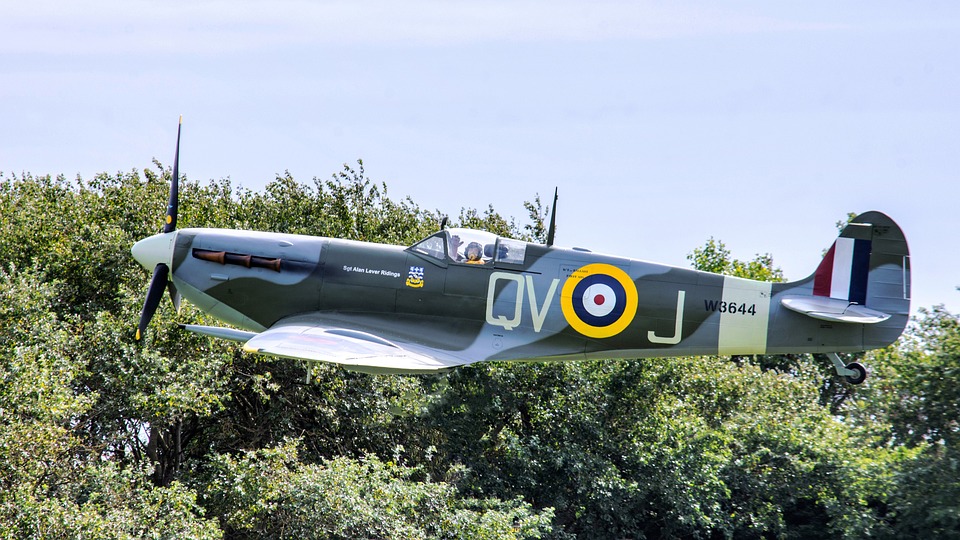
The most important contribution Great Britain made during World War II, was to survive Hitler's onslaught in 1940.
The Battle of Britain was the successful defense of Great Britain, from 10 July to 31 October 1940, between the Royal Air Force (RAF) and the German Air Force (Luftwaffe), after the fall of France on June 22, 1940.
Great Britain became the last bastion against “the menace of tyranny,” in the words of Prime Minister, Winston Churchill.
After the fall of France, Germany prepared for an invasion of Great Britain through:
*A massive bombing campaign to destroy their airforce.
*Unremitting and destructive air raids against London and other cities to crush British morale
*A land invasion by the German army which was then in control of the ports of France across the English Channel.
The German Luftwaffe were denied air superiority by the faster and more agile British, Hurricane and Mark I Spitfire fighter planes that matched the German, Messerschmitt Bf 109.
The RAF also had the most advanced air defense network in the world - the Dowding System.
The Royal Air Force victory not only blocked the possibility of a German invasion but also saved Great Britain from Nazi occupation.
British victory enabled the Americans when they joined the war to establish a base of operations on British soil.
"(There'll Be Bluebirds Over) The White Cliffs of Dover"
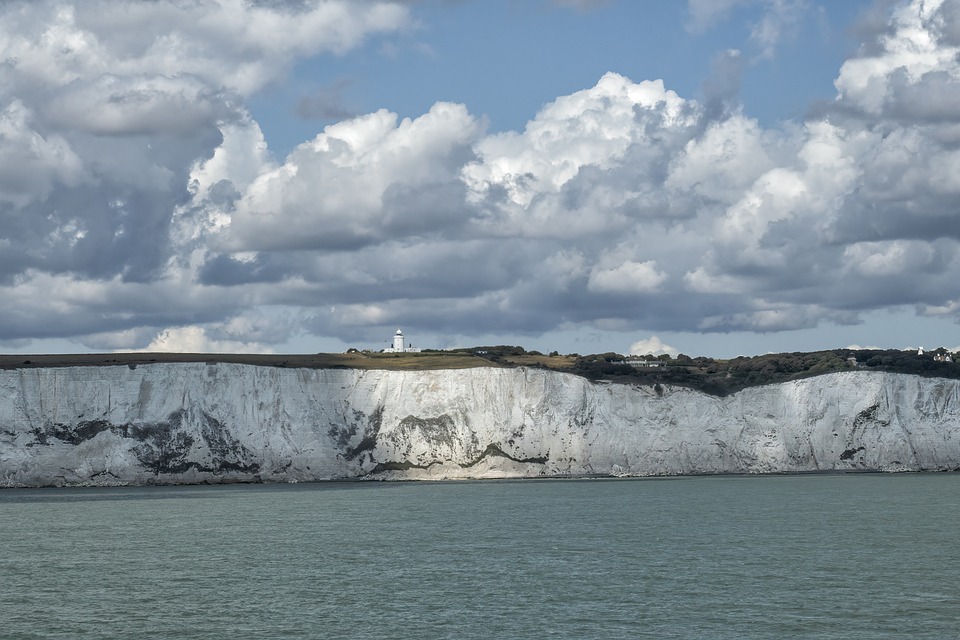
"(There'll Be Bluebirds Over) The White Cliffs of Dover" is an iconic World War II song composed in 1941 by Walter Kent to lyrics by Nat Burton.
It was made famous by Vera Lynn in 1942 and was among the most popular songs of World War II.
As the British people suffered the onslaught of German bombings the song gave the nation hope of a peaceful tomorrow: "There'll be bluebirds over the White cliffs of Dover tomorrow, just you wait and see."
America nor the Soviet Union had joined as yet, and France had fallen to the Nazis which left only Britain as the only major power fighting the Axis powers in Europe.
Vera Lynn was the "The Forces' Sweetheart" during Great Britain's "The Darkest Hour" of World War II (mid-1940 to mid-1941) whose morale boosting songs gave hope and reminded British troops of home and family.
Winston Churchill's speech on May 13, 1940: "I have nothing to offer but blood, toil, tears and sweat. We have before us an ordeal of the most grievous kind. . . . You ask, what is our policy? I will say: It is to wage war, by sea, land and air, with all our might and with all the strength that God can give us: to wage war against a monstrous tyranny, never surpassed in the dark, lamentable catalogue of human crime. . . . You ask, what is our aim? I can answer that in one word: It is Victory, victory at all costs, victory in spite of all terror, victory, however long and hard the road may be; for without victory, there is no survival."
The White Cliffs of Dover
The iconic White Cliffs of Dover are Britain's symbolic border with the European mainland which lie at the most narrow part of the English Channel, facing the sea towards continental Europe at its closest point to Britain.
On a clear day the cliffs are visible from France (approximately 20 miles (32 km) away).
The iconic British landmark has become a symbol of home and of British military history.
They have stood through numerous invasion attempts over the centuries, from Julius Caesar in 55 BC to Hitler's Nazis.
The White Cliffs of Dover greeted the thousands of Allied troops evacuated from Dunkirk by the famous 'Little Ships' of World War II.

Australia in World War II
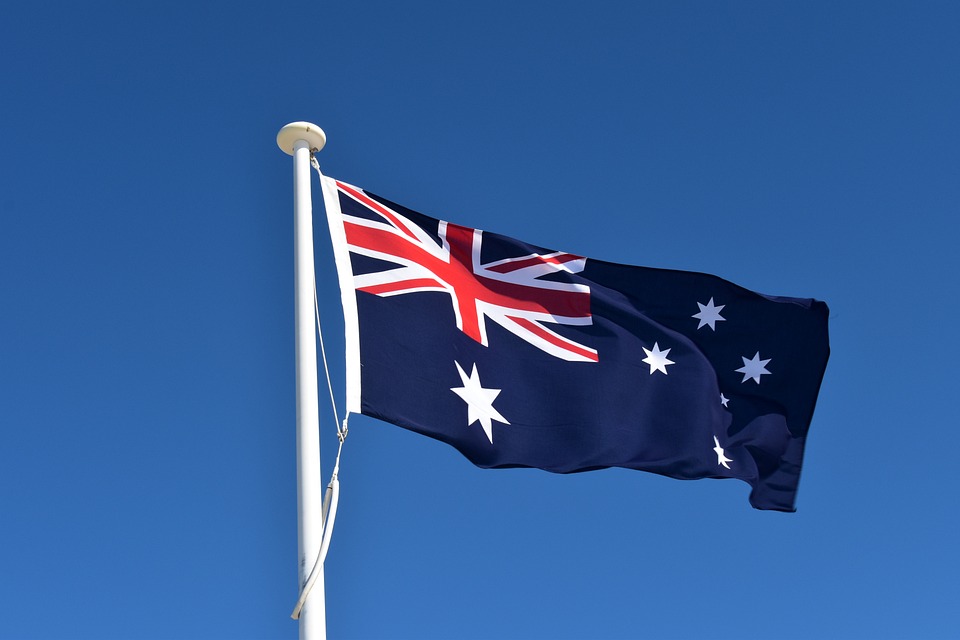
Australia entered World War II on 3 September 1939 when the United Kingdom declared of war on Nazi Germany and later, the Kingdom of Italy on 11 June 1940 and the Empire of Japan on 9 December 1941.
Almost a million Australians fought on land, at sea and in the air, in the European theater, North African campaign, and the South West Pacific theater and Australia came under direct attack for the first time in its post-colonial history.
There were 27,073 killed and 23,477 wounded, countless suffered from tropical disease and hunger.
The brutal conditions of captivity saw only 14,000 survivors of the 21,467 Australian prisoners taken by the Japanese.
During the war of the forties, in the South-West Pacific, the United States became Australia's greatest ally.
The Australian Navy helped to win the Battle of Cape Matapan (March 1941) in the Mediterranean Sea and from 1942 until early 1944 played a key role in the fighting in the South West Pacific theater.
United States Before Entering World War II
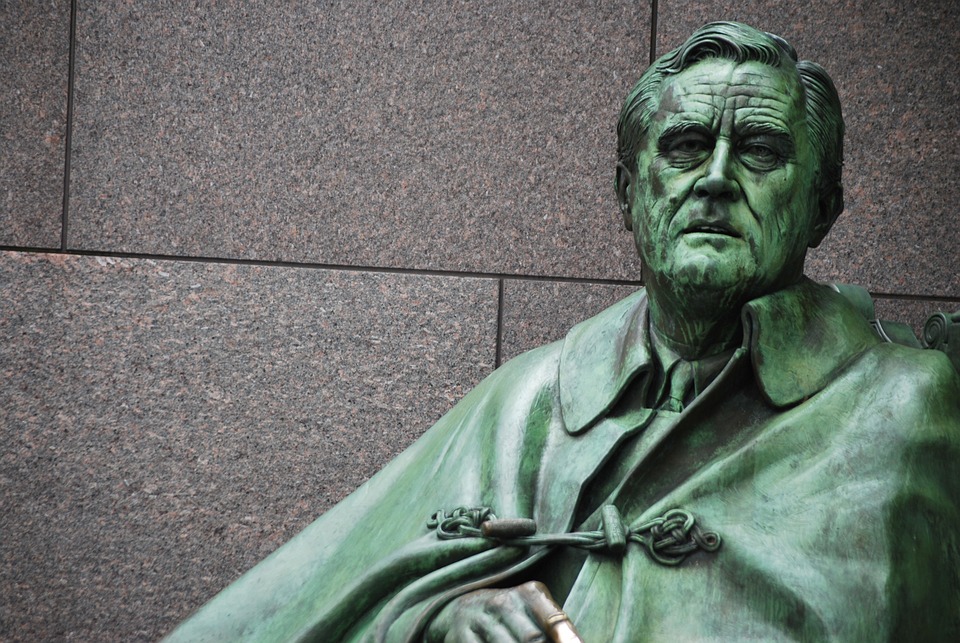
Four Freedoms
The Four Freedoms were goals given in an address by U.S. President, Franklin D. Roosevelt on January 6, 1941 (11 months before the surprise Japanese attack on Pearl Harbor), where he proposed four fundamental freedoms that people "everywhere in the world" should enjoy:
1. The freedom of speech
2. The freedom of worship
3. The freedom from want
4. The freedom from fear
The Four Freedoms Act was passed on March 11, 1941.
The United States declared war on Japan, December 8, 1941.
These four freedoms symbolized America's war aims to all people who valued liberty and democracy.
Lend Lease Act
The Lend-Lease Act passed on March 11, 1941, stated that the U.S. government could lend or lease military supplies to any nation deemed “vital to the defense of the United States.”
Initially, it was given by President Roosevelt to direct aid to Great Britain and then extended to China, the Soviet Union, France and other Allied nations who needed vital ammunition, tanks, airplanes, trucks, food, oil, and other material between 1941 and 1945 without violating the nation's official position of neutrality.
By the end of the war, the United States had extended over $49 billion in Lend-Lease aid to nearly forty nations making it the “arsenal of democracy” during World War II.
Pearl Harbor
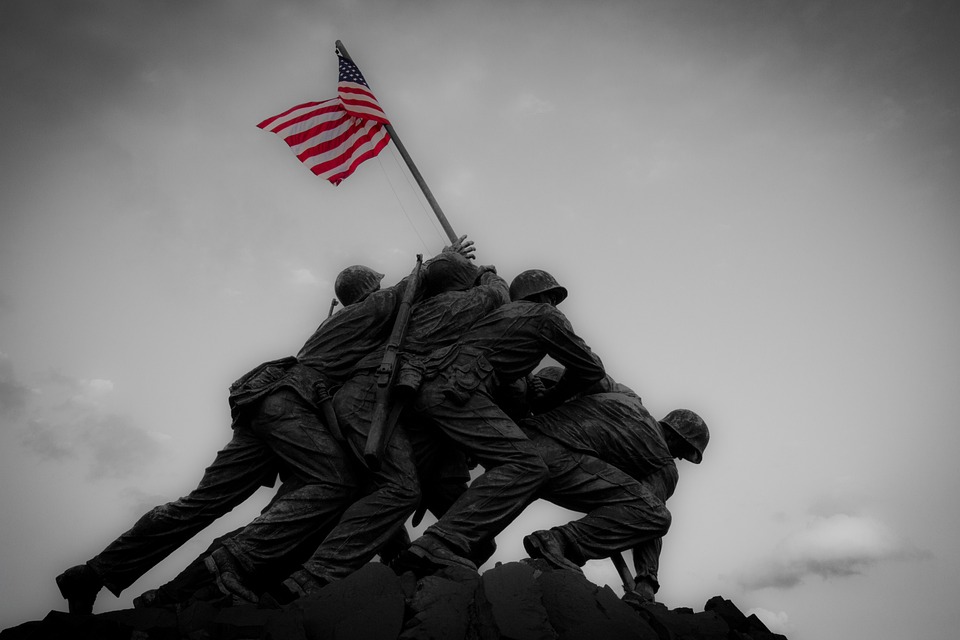
The war years of the forties saw the United States pushed into war on December 7, 1941, when the Imperial Japanese Navy conducted a surprise aerial assault on the American naval base on Pearl Harbor in Hawaii.
The Japanese attack killed 2,403 U.S. personnel and 68 civilians, it destroyed or damaged 19 U.S. Navy ships, including 8 battleships and more than 180 aircraft.
Japan's attack on Pearl Harbor was a preventive action designed to cripple the American Pacific Fleet so it would not interfere with its planned military actions in Southeast Asian territories.
Japan wanted to be the dominant Pacific power and to seize the resources of Southeast Asia.
December 11, 1940
Adolph Hitler declared war on the United States in accord with the Tripartite Pact of September 27, 1940.
On the same date, Italy declared war.
July 26, 1941
President Franklin Roosevelt seized all Japanese assets in the United States in retaliation for their occupation of French Indo-China.
August 1, 1941
America established an embargo on oil and gasoline exports to Japan.
December 8, 1941
The day after the Japanese attacked Pearl Harbor, President Franklin Roosevelt delivered his "Day of Infamy Speech."
Immediately afterward, Congress declared war, and the United States entered World War II.
June 1942
The United States was victorious over Japan in the Battle of Midway and became a turning point of the war in the Pacific.
After that, the United States and its allies, Australia and New Zealand began a long counterattack across the Pacific.
Japan’s unwillingness to surrender unconditionally meant the continuation of the war and more lives lost.
The Japanese had a belief of never having to surrender.
Officers would rather commit suicide (hari-kiri) than face the shame of defeat.
October 25, 1944
The Japanese deployed kamikaze (“divine wind”) (suicide) bombers during the Battle of the Leyte Gulf for the first time by crashing their planes directly on American warships in suicide missions.
August 6, 1945
The first atomic bomb was dropped from the Enola Gay, a U.S. B-29 bomber, on Hiroshima.
After the war with Nazi Germany ended, the United States wanted unconditional surrender from Japan to avoid an invasion by the United States.
The Soviet Union officially declared war on Japan following the defeat of Nazi Germany and sent more than 1 million Soviet soldiers into Japanese-occupied Manchuria. Concerns arose that the Soviets were positioning themselves for communist expansion in Asia - particularly, the Korean Peninsula.
August 9, 1945
A second bomb was dropped on Nagasaki from the Bockscar, also a B-29 bomber.
August 14, 1945
The Japanese government recognized that victory was impossible and accepted Allied surrender terms without qualifications.
September 2, 1945
Japanese representatives signed the official Instrument of Surrender approved by President Harry S. Truman during a ceremony on the deck of the battleship USS Missouri which brought the war's hostilities to a close.
This day marked the end of World War II.

D-Day
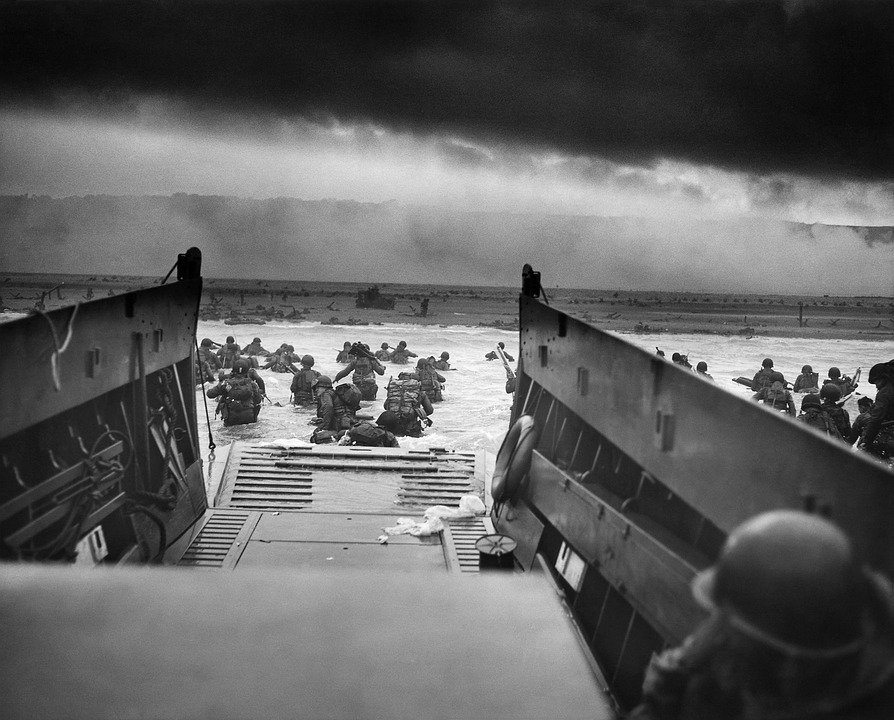
On June 6, 1944, Allied troops invaded German-held France, landing on the beaches of Normandy.
It was the start of a long and costly campaign to liberate Europe from Hitler's tyrannical, Nazi occupation.
The D-Day operation, code-name "Operation Overlord," was the largest amphibious invasion in human history that brought together the land, sea and air forces of 156,115 U.S., British and Canadian troops, 6,939 ships and landing vessels, and 2,395 aircraft and 867 gliders that delivered airborne troops.
United States General, Dwight D. Eisenhower, was supreme commander of "Operation Overlord."
The majority of troops who landed on the D-Day beaches were from the United Kingdom, Canada and the US.
Troops who also participated in the D-Day, Battle of Normandy included Australia, Belgium, Czechoslovakia, Denmark, France, Greece, the Netherlands, New Zealand, Norway and Poland.
The Final Solution
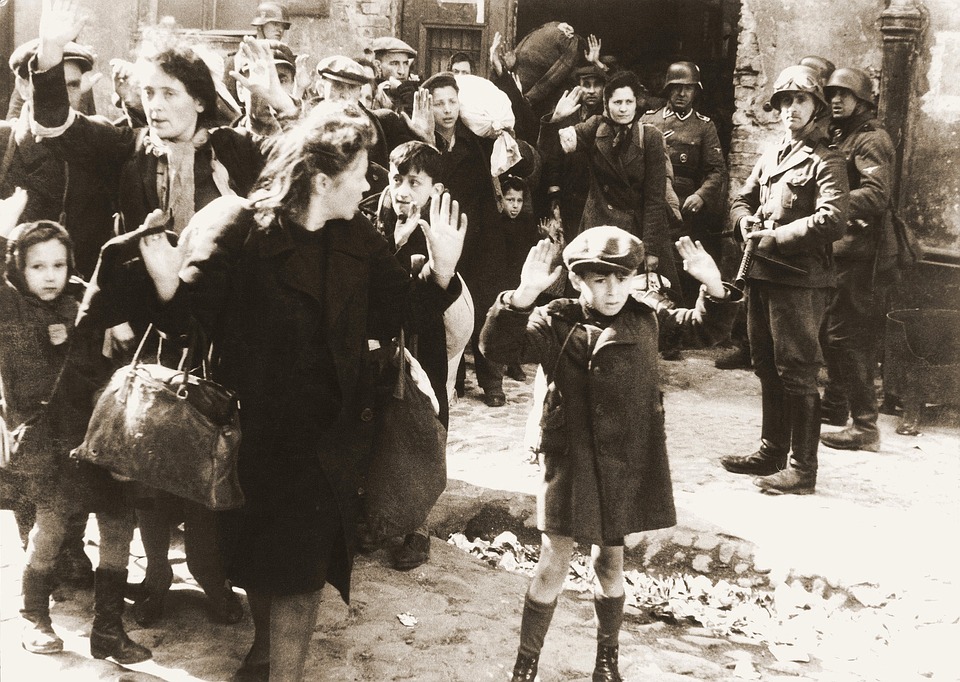
The war years of the forties saw the Nazi campaign of genocide to eliminate European Jews.
Nazi ideology was based on nationalism, racial superiority, antisemitism and anticommunism.
Antisemitism was one of the most fundamental causes of the Holocaust implemented by the Nazis which persecuted and oppressed the Jews and eventually led to their deportation and murder.
From 1933, after the Nazi Party gained power in Germany its state-sponsored racist ideology led to anti-Jewish legislation, economic boycotts, and violence aimed to isolate Jews from society and drive them out of the country.
Other victims targeted by the Nazis were based on both racial and political grounds which included gays, the physically and mentally disabled, Roma (gypsies), Poles and other Slavic peoples, Jehovah’s Witnesses, and political dissidents.
After the September 1939 German invasion of Poland (beginning of World War II), anti-Jewish policy increased to the imprisonment and eventual murder of European Jews.
The Nazi "Final Solution to the Jewish Question" was deliberate and systematic genocide across German-occupied territory that took place from 1941 to 1945.
After the June 1941 German invasion of the Soviet Union, SS and police units began massive killing operations throughout Jewish communities.
On January 20, 1942, 15 high-ranking Nazi Party and German government officials gathered at Wannsee, Berlin to implement the "Final Solution of the Jewish Question."
Between 1944 and 1945, as Allied and Soviet troops moved across Europe against Nazi Germany as liberators, they were confronted with the full scope of Nazi horrors in concentration camps, mass graves, unburied corpses, bones, and human ashes.
They also found thousands of Jewish and non-Jewish survivors suffering from starvation and disease who resembled skeletons and were so weak, they could hardly move.
After liberation, many Jewish survivors feared to return to their former homes because of the antisemitism that persisted in parts of Europe and the trauma they had suffered.
Those who did return home, feared for their lives.
Aftermath of World War II
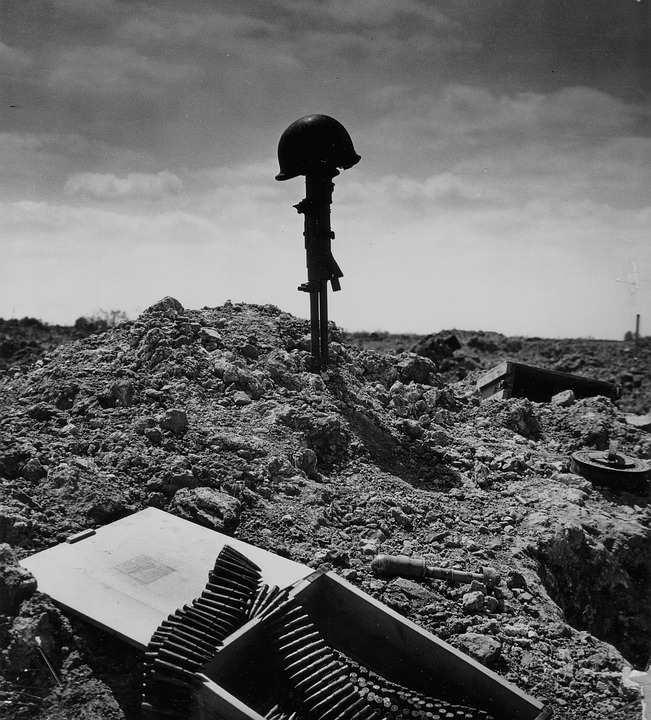
Nazi Germany surrendered twice.
May 7, 1945
The unconditional surrender of the German Third Reich was signed at Supreme Headquarters, Allied Expeditionary Force (SHAEF) at Reims in northeastern France.
May 8, 1945
The surrender of Nazi Germany to the Allies was signed by Field Marshal Wilhelm Keitel on 8 May 1945 in Karlshorst, Berlin to Soviet officials.
*Around 85 million military and civilians died.
*Combat and bombings flattened cities and towns, destroyed bridges and railroads and scorched the countryside.
*Britain and France lost most of their empires.
*Italy, and Japan were conquered and occupied.
*Germany was divided into West Germany and East Germany.
*The Soviet Union suffered the highest fatalities estimated between 22 and 27 million deaths.
*The United States and the Soviet Union emerged from World War II as the two “Superpowers” with the military and political strength to influence worldwide events.
The end of World War II saw one of the largest population movements in European history as people sought to escape the devastation or oppression in their homelands in places like Australia and the United States.
*The Marshall plan helped to promote recovery and hope in Europe.
*Nato, founded in 1949, provided a security umbrella under a mutual defense organization.
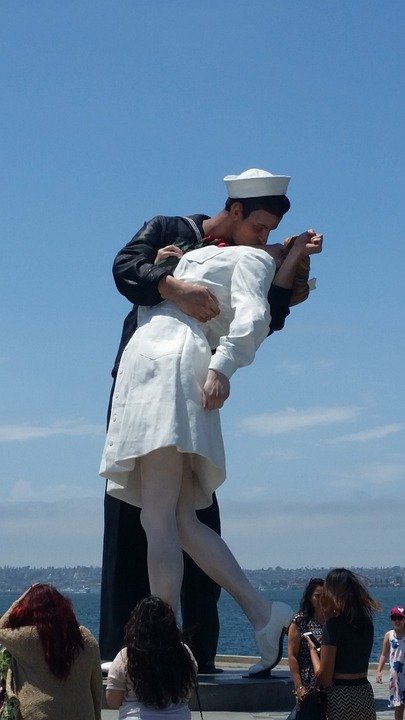
The Cold War
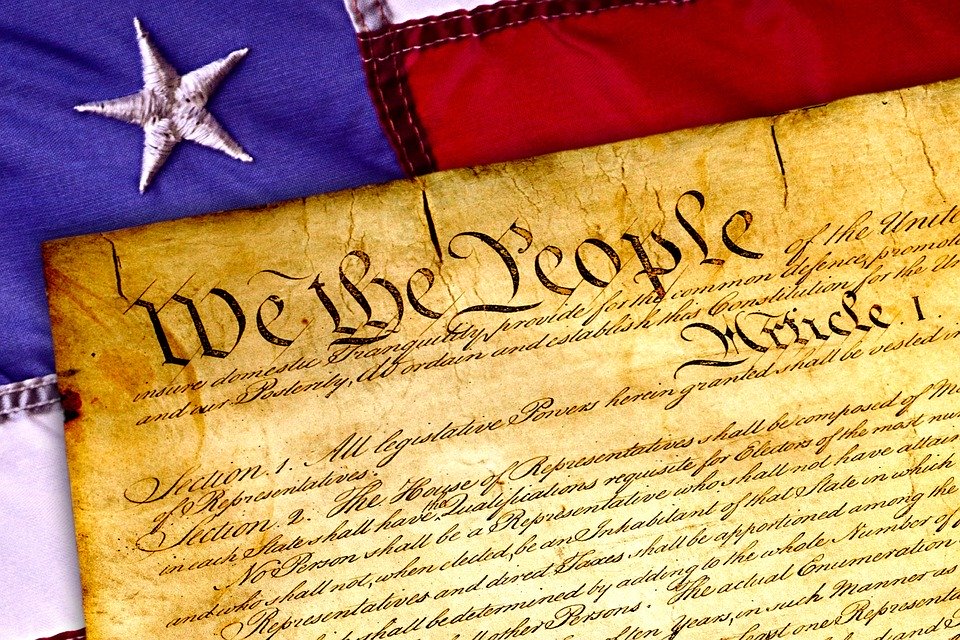
The aftermath of World War II brought ideological and political rivalry between the democratic, United States and communist, Soviet Union and their respective allies who competed for political and military supremacy that culminated in the Arms Race and divided the world into two armed camps
It was called the Cold War because neither the United States or the Soviet Union officially declared war on each other.
Instead, both tried to prevent the other from spreading its economic and political systems globally expressed a massive conventional and nuclear arms race, military coalitions, propaganda, espionage, political subversion and proxy wars.
Western and Southern Europe as well as Asia were rebuilt through the American Marshall Plan.
While the Allied Powers allowed the government of each country in Western Europe to democratically re-establish themselves.
The Soviet Union created an "Iron Curtain" in Central and Eastern Europe that divided Europe into a US-led Western Bloc and a USSR-led Eastern Bloc.
The Iron Curtain was the political, military, and ideological barrier erected by the Soviets to seal itself and its dependent Eastern and Central European allies from open contact with the West and other non-communist areas.
These authoritarian, single-party regimes created an atmosphere of anxiety and fear and shared certain basic features:
*An embrace of Marxism-Leninism
*Rejection of private property and capitalism
*State ownership of economic activity
*Complete political power by one party - the Communist Party
Threat of Nuclear Attack
From 1949, a race started between the two superpowers to amass the most powerful nuclear weapons with the most effective delivery systems.
End of the Cold War
The collapse of the Soviet Union marked the end of the Cold War
The United States and Russia cut down on nuclear weapons spending although both countries maintain significant stocks of nuclear missiles.
On December 31, 1991, the Soviet Union then split up into 15 independent nations Armenia, Azerbaijan, Belarus, Estonia, Georgia, Kazakhstan, Kyrgyzstan, Latvia, Lithuania, Moldova, Russia, Tajikistan, Turkmenistan, Ukraine, and Uzbekistan.
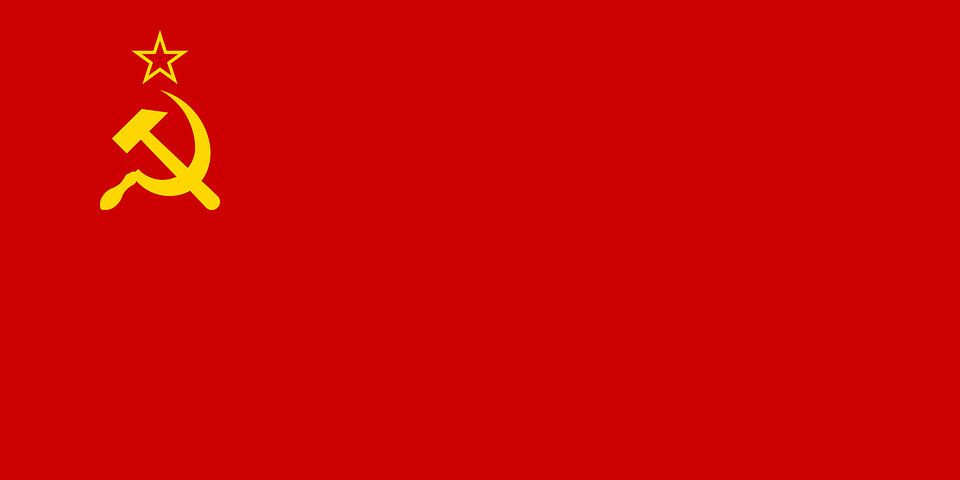
Greek Civil War
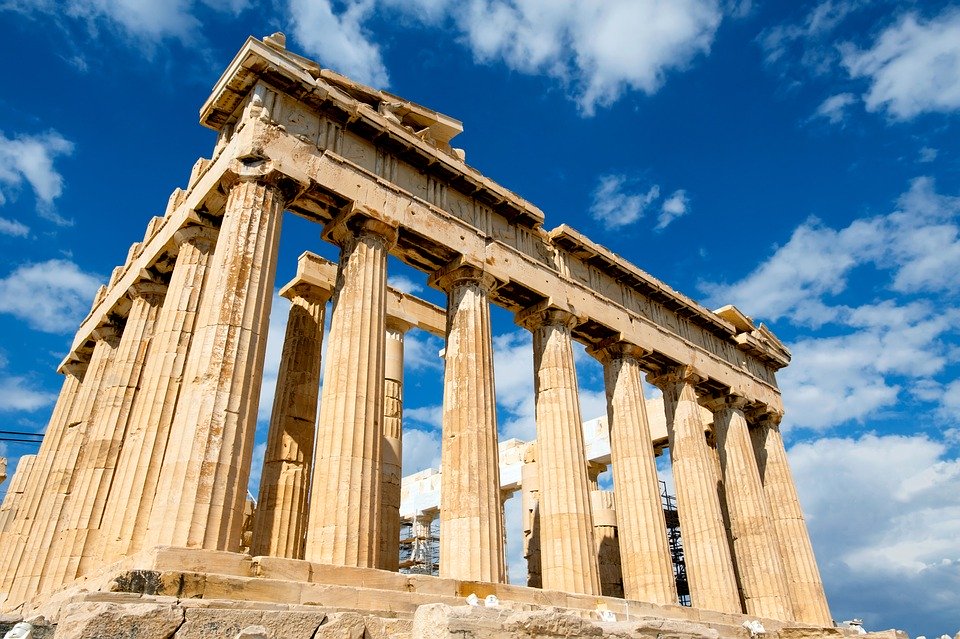
The Greek Civil War was a struggle between communism and democracy.
It was to be the first proxy battle of the Cold War.
Greece was the only place in Central, Balkan and Eastern Europe where communism attempted, but failed, to take power.
Over the next five years this devastating war would shatter Greece and transform Europe.
The civil war left Greece in a greater economic crisis than the country suffered as a result of the German occupation.
In Greece, the communists launched a campaign to win control of the whole country.
The embattled Greek government was given substantial military and economic aid first by Great Britain and after, by the United States
Northern Greece (Macedonia,Thrace and Epirus) became the center of the conflict because of its mountainous terrain and common borders with the communist Balkan countries.
Yugoslavia's communist dictator, Joseph Broz (Marshal Tito) was always the major supporter and supplier of the Greek communists along with Albania and Bulgaria.
Tito's goal was to communize the Balkan peninsula, gain control of the key port city of Thessaloniki and partition Macedonia into a separate communist state.
To make future claims on Greek territory and to forment unrest in Greece in 1944, he re-named Yugoslavia's southern republic as Socialist Republic of Macedonia.
In March, 1948, the Greek communists who kept records of all children aged 2 to 16 in all areas they controlled, took over 30,000 children either voluntarily or forcibly across the northern borders into the communist Balkan and Eastern bloc countries of Europe to be indocrinated.
Thousands of communist fighters and officials also crossed over behind the Iron Curtain.
With the support of the United Kingdom and United States, the Greek government forces ultimately prevailed.
The defeat of the communists in 1949 ended the immediate threat of annexation of Greek Macedonia by Yugoslavia's Marshal Tito.
Music of the 1940s

Swing, big band, jazz, blues, Latin and country music defined the war years of the forties music.
The 1940's was also known as part of the swing dance era that developed with the swing style of jazz music in the 1920s through to the 1940s.
Bing Crosby was the best selling singer of the 1940s.
Other popular singers of the era included Frank Sinatra, Ella Fitzgerald, Billie Holiday, the Andrews Sisters, Judy Garland, Erline Harris, Louis Armstrong and Great Britain's Vera Lynn.
Big bands of the war years of the forties included Benny Goodman, Glenn Miller, Tommy Dorsey, Harry James, Artie Shaw, Duke Ellington and Count Bassie
Popular wartime songs were Boogie Woogie Bugle Boy, Shoo Shoo Baby, I'm Making Believe, I'll Be Seeing You, and I'll Be Home for Christmas.
These artists shaped the sound of popular music during the 1940s and left a lasting music legacy to make the war years of the 1940s truly memorable.
Ezine Articles Author Link
Click on the Link Below

Newsletter Opt-in-Form
The Keen Traveler
Your second block of text...
Recent Articles
-
Beauty of Christmas
Dec 11, 25 04:22 AM
The beauty of Christmas is the celebration of the real Christmas Story with the Birth of Jesus Christ, the Son of God, Who came to bring love, hope, and salvation to the world. -
Spiritual Treasures of Life
Nov 26, 25 04:44 AM
Spiritual treasures of life are internal riches that are more valuable and everlasting than material wealth. -
Teachings of Jesus Christ
Oct 14, 25 05:45 AM
The Teachings of Jesus Christ have fascinated people for centuries with their powerful Message of love and hope that have stood the test of time.


